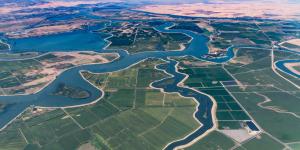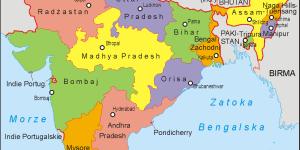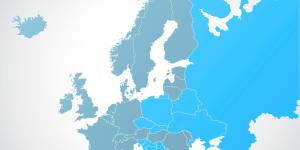What Are the Branches Of Geography? - List and Description


The work ‘Geography’ has been derived from ‘geographia’, which means ‘description of the earth’. The science of Geography is related to the study of earth, its phenomena, its features, inhabitants, lands and processes. The field encompasses the understanding of earth, along with a wide range of natural and human complexities. Geography is a vast field of study that has kept millions of researchers busy in dozens of branches and sub-disciplines. Almost every subject on this earth has a branch of Geography related to it. Essentially, Geography has been divided into two broad branches, which are Physical Geography and Human Geography. With an aim to acquaint you with the diversity of geographical branches, this oneHOWTO article is going to discuss what are the branches of Geography? We'll also give you a few details about each of them.
Physical Geography
Physical Geography, also termed as Physiography, is the branch of Geography that deals with Geography in reference to Earth Sciences. It aims at understanding physical problems of the earth, including the atmosphere, flora and fauna, and other global issues of the planet, including climate, soils, land-forms, oceans etc. We can further divide Physical Geography into the following sub-divisions:
- Climatology: This division focuses on the study of climate in respect to its effects on biological and physical conditions of the earth. This is a vast discipline which studies regional, local and global climates, and how they get affected by human and natural influential factors.
- Geomorphology: This is the science that focuses on the processes involved in the shaping, destruction and formation landforms
- Meteorology: It deals with the short-term forecasting of weather, including parameters of air pressure, moisture, temperature etc.
- Pedology: It is the study of different soil kinds in the natural environment
- Hydrology: This study refers to the understanding of water on the earth surface, along with its interaction with earth’s biological and natural factors
- Oceanography: It is related to the study of oceans and seas across the world, pertaining to marine ecosystems, marine life, waves, currents, tides, natural resources, marine geology, chemical substances and others
- Coastal geography: It studies the interactions between oceans and the land, along with processes like coastal erosion, the formation of Deltas, sea level changes and sediment movement
- Glaciology: It refers to the study of ice sheets and glaciers on this earth, including the melting and formation of ice, and the phenomena of global warming
- Water resources: In this field, researchers look at the use and distribution of water in different parts of the world, along with human developed processes of water use, storage and distribution
- Biogeography: It is related to the distribution of different plant and animal species present on the earth, along with the processes that determine dwelling of certain species in particular regions
- Landscape ecology: It studies the inter-relationship between different ecosystems and ecological processes
- Paleogeography: It is a combination study of Geography and History, as it encompasses analysis of geographical features in relation to living species in historical times. It is closely related to Paleontology.
- Geomatics: It involves collection, storage and analysis of different kinds of geographic information using techniques like GIS, remote sensing and computational geography. Remote sensing makes use of sensors and satellites to examine different features near or on the earth from a remote distance. Data received from remote sources is analyzed for the development of information about a geographical region
- Quaternary Science: It is related to the study of Geography during the quaternary period, the time which involves two major eras of the geological system, the Holocene and the Pleistocene, and how the processes during that period affected today’s geographical conditions
Human Geography
This branch of Geography focuses on the processes and patterns that shape the society, including the political, social, economic and cultural aspects. Humans are the major components of this branch of Geography, and it deals with the study of varied human communities and cultures. Human Geography has the following sub-branches:
- Cultural Geography: This branch studies varying cultures from one region to the other, what influence do distant cultures have on each other, and how one culture starts dominating the other. It includes parameters of religion, economy, beliefs, language and others to carry out extensive cultural geographical studies
- Historical geography: This study is related to human interaction with environment, based on parameters of space and time. It involves study of different geographies in the past, and what brings changes in a geographical region over time
- Sport geography: This geographical study involves leisure time activities like sports, and how they influence geographical environments. As sport is one of the biggest industries, it interests geographic researchers to a great extent
- Economic geography: This studies a region’s economic activities with respect to its Geography. It studies how certain economic activities are concentrated on particular areas of a region, along with international trade, transportation, economic development and others.
- Political geography: It deals with the study of how geographical factors influence a region’s political structure, and how similar processes may bring different outcomes in different places. For instance, a region’s geographical features can bring large changes in the political strategies and processes in its military
- Military geography: This branch of Geography involves geographical distribution of military troops and facilities, and application of geographic tools for the development of military solutions
- Settlement geography: This branch studies certain parts of the earth in which humans have chosen to settle down. It studies rural and urban areas in relation to the settlement patterns of humans and how geographical factors influence them.
- Development geography: This study deals with how a region’s Geography affects the living standards and quality of living of its inhabitants. It tries to find out why people in particular regions are weaker or poorer than people in other regions
- Population geography: This branch is related to the composition and distribution of population, population growth trends, migration patterns and other factors in relation to geography of the region
- Health geography: This division of Geography encompasses the study of diseases, cure and healthcare in relation to particular geographical regions. It studies how people in particular areas are more prone to develop specific diseases, and what factors influence them
- Agricultural geography: This branch of agriculture involves study and research in the fields of agriculture, rural settlement, agriculture, geographic movement, land use and agricultural products
- Transportation geography: It studies transportation networks in both public and private sectors, and use them to move goods and people

Integrated Geography
In addition to Physical and Human Geography, there is a third branch of Geography called Integrated Geography. We can broadly classify this third branch into a couple of sub-branches:
- Regional geography: This subjective branch of Geography studies different geographical regions with an aim to understand unique elements of all. This may be related to any aspect, whether human or physical
- Environmental geography: This branch of Geography deals with the impact and interaction of humans on the earth. It offers a connection between Physical Geography and Human Geography, and thus includes in-depth information about both of them. It understands how the world and humans affect each other’s processes, and how they influence the existence of living beings on this earth.
Since Integrated Geography is related to spatial interaction between nature and humans, it involves traditional aspects of both Human and Physical Geography. It also describes the way human society influences the environment, and how environment changes technological changes and globalization on the earth. It also includes research areas like political ecology, sustainability, emergency management, environmental management and others.
Want to know more about other scientific branches? Take a look at our articles on the following:
If you want to read similar articles to What Are the Branches Of Geography? - List and Description, we recommend you visit our Learning category.





